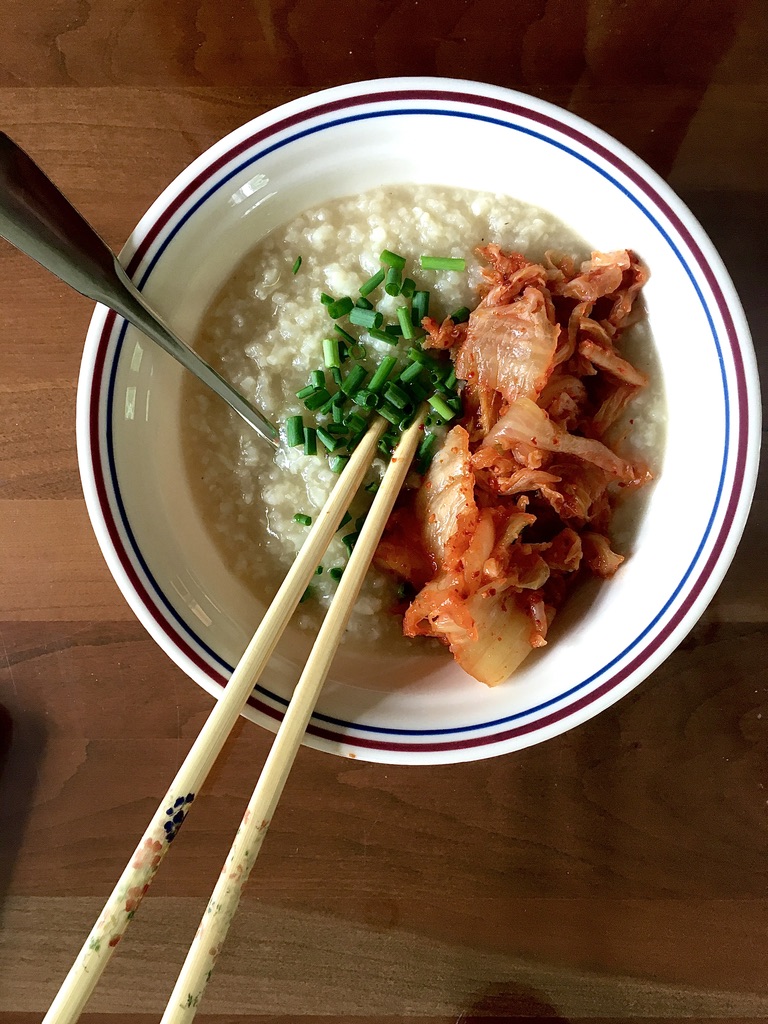One of the very first culinary events of my life occurred when I was in first grade. My tastes at the time were limited, as is often the case with the young palate. Bland starches were the pinnacle. White bread sans crust. Easy Mac Kraft Mac and Cheese (woe be unto the person who tried to get me to eat actual homemade, baked mac and cheese. Too flavorful cheeses! Too many textures! Too much for my young tastebuds, feeling inundated with sensory overload of flavors and mouth feel! I had also already learned the important role smell played in eating. Potent odors often accompanied dishes with potent flavors. So while sometimes I would be caught off guard by deceivingly complex flavors wrapped in minimally scented packages, my nose could at least help my young palate out and guide it away from anything that smelled too well-seasoned.
Therefore, when I arrived at the dinner table one night to find a steaming bowl of homemade pea soup, my nose sent alarm signals right to my brain. Vegetables, in general, were a no go for me. Especially when cooked, there was a lot to smell and a lot to taste. The quintessence of culinary sensory overload at the time. Add to that the fact that peas were, in my limited experience, small and orbital. Now they were made liquid enough to be soup? I was having none of it, and indeed, had none of it, refusing to even try it, insisting I knew I wouldn’t like it.
But the rule in my family stood that you had to at least try everything on the plate, because you don’t know until you try. If, after trying it was still not gonna happen, something else could be made up quick. But if I wasn’t even going to try the pea soup, it would stay waiting for me at every meal until I did, no alternatives or substitutions. I woke up the next day to bowl of pea soup reheated for breakfast, sat down to the same re-re-heated bowl at dinner. Not a lick attempted. This went on for days, the only respite being found in school lunches that the pea soup could not infiltrate. The weekend eventually came, though, with no school lunches to tide me over. So finally, one night after a week of resistance, I caved.
Shocker, I didn’t like it. I promptly cleansed my palate with something simple and starchy and sweet, finally allowed to now that my hunch was confirmed. (My mother would like to add that she was so concerned about my refusal to eat after the first day that she called the pediatrician more than once during this time. He assured her that your overall health would not be in any danger and that I would eat when I were ready. All was done to avoid the possibility that I would never try vegetables again. The vegetable-loving author of today is ultimately thankful)
Perhaps that experience is why I had never thought much of soup. I was always down for a can of Campbells Tomato. In time I even got accustomed to the textural variety in stews, where I was at least able to pick out the whole vegetables that were hiding amongst the chunks of meat and potatoes. I could get through a clam chowder, though the milkiness of it was slightly off-putting. A sweet potato soup came into our repertoire a few years ago that was well received by all (there’s actually a tub of it frozen downstairs at the moment). But even as my tastes have grown, I never got excited for soups like I would for other, more solid main courses.
This year, though, as I further expand my repertoire, I have come around to be a soup person. As fall has transitioned into a classic New England Winter (our first big storm coming down and blanketing the lawn as I write), soup night has become a regular weekly staple to look forward to, bringing a pot full of that potent smell and flavor of which I would have previously been so afraid, and a crusty, anything but bland homemade bread to boot.
My window in was a black bean soup I wrote about a few months back at the beginning of quarantine that, wildly enough, was starting on the tail end of colder months. Stupidly simple, deeply flavorful, highly personable with sour cream, avocados, salsa, green onions, and perfect for sopping up dregs with pita or rolls, it showed everything there was to love in soup. In the throes of a scorching, dry summer, we were blessed with a torrential downpour that felt like the perfect opportunity to try congee, the Chinese rice porridge that is comfort in a bowl, and happily spooned up unadorned (though I did add a little kimchi to one to much success). As fall crisped up the air I made my first lentil soup. A seafood bisque courtesy of the local chef Oonagh Williams. A friend’s potato and leek soup recipe. A savory bowl of udon. A simple but effective tortellini in homemade broth. And while I did make a batch myself, nothing can compare to pho done by the professionals, so sometimes soup night coincides with take-out night resulting in perhaps my favorite soup (and one of my favorite meals) of all, beef pho from Pho Street in Nashua.
And while all are wildly different, the joy to be had in making them is often similar. A mirepoix, or variation thereof, is always an exciting start, perfuming the house in that way that get someone to say “Something smells good!”. The satisfaction of deglazing, scrapping all that flavor up and saving it from a sticky, tragically wasteful end. The slow bubbling as it continues to mingle and meld. The intermittent tasting and perfecting of flavor. Taking the time to appreciate the often-doubted bay leaf and all it can accomplish by hanging with some veggies in simmering liquid for a bit. Perhaps the deepest satisfaction of all being that it all happens in one pot; often the Dutch oven, the star of most long-cooking, high-liquid dishes. Sometimes the immersion blender gets to shine, as is the case with the potato and leek soup, making a creamy soup with no actual cream needed. Blended or not, the end result of most being a miraculous example of the best the cooking process has to offer.
As satisfying as the soup is to make and eat, perhaps even more rewarding to make is the stock. Yes, I amone of those people who started making their own stock during the pandemic and yes, I am better off for it. It is one of those truly low effort high reward, do-it-yourself kitchen tasks that had been talked up for years that I never paid much mind, but is every bit as easy and worth it as they say. I mourn the leftover bones and vegetable ends of years gone by and the beautiful stock they could have made together. The Turkey carcasses of Thanksgivings that never got to give the best that they had. But the past cannot be undone, and now I make up for it by gathering what bits, pieces, and bones we produce throughout the weeks, saving them in the freezer until a goodly amount accumulates, and bringing it together with whatever herbs and spices I choose to make actual liquid gold. Sometimes I curate the pot specifically. Sometimes it’s more of a “kitchen sink” stock. Whatever the case, the product brings not only our soups and stews to a whole new level, but kicks sauces up that extra notch, and adds a special touch to a side of rice or couscous that well-salted water just can’t do. So, as I am sure you have heard for the millionth time: Make your own stock. The act of slowly simmering bones and aromatics for a couple hours, perfuming your house like no candle ever could is worth it enough.
After an easy night of defrosting the sweet potato soup and a planned revisit to the potato and leek, I’m hoping to try this shakshuka-esque chickpea and tomato soup my sister has made a regular staple in her life. What are some of your favorite soups? How do you like to spice up your stock? What are some of your favorite breads sop up your soup? Let me know!


